A skirt is a must-have item in every woman's wardrobe. Since you can't always find your ideal option in stores, you have to sew. For sewing, it is very important to understand the fabric so that the finished product looks the way you want it to.
What determines the choice of fabric for a skirt
The choice of fabric is the most important step in preparing for sewing. In order not to miss, you need to understand what criteria affect this:
- the style of the skirt (this is the most important thing, since a product made from the wrong material will not hold the desired shape);
- time of year (it is more appropriate to take lighter fabrics for summer, and correspondingly denser ones for winter);
- purpose (for the office under heels, for a walk under sneakers, etc.).
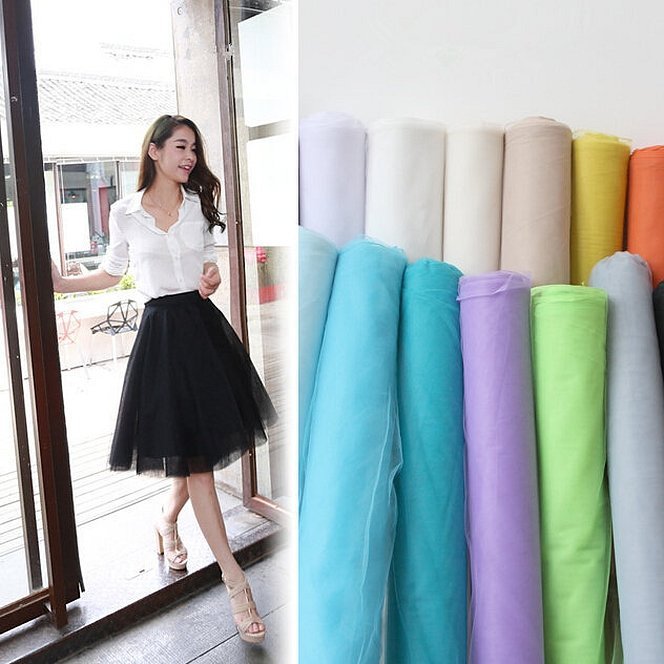
Now a little more detail about each point.
When choosing a skirt style, it is important to consider not only personal preferences, but also the specific features of your figure:
- the pencil skillfully emphasizes slender legs and the refined curves of the hips, but does not look good on very narrow or, conversely, wide hips;
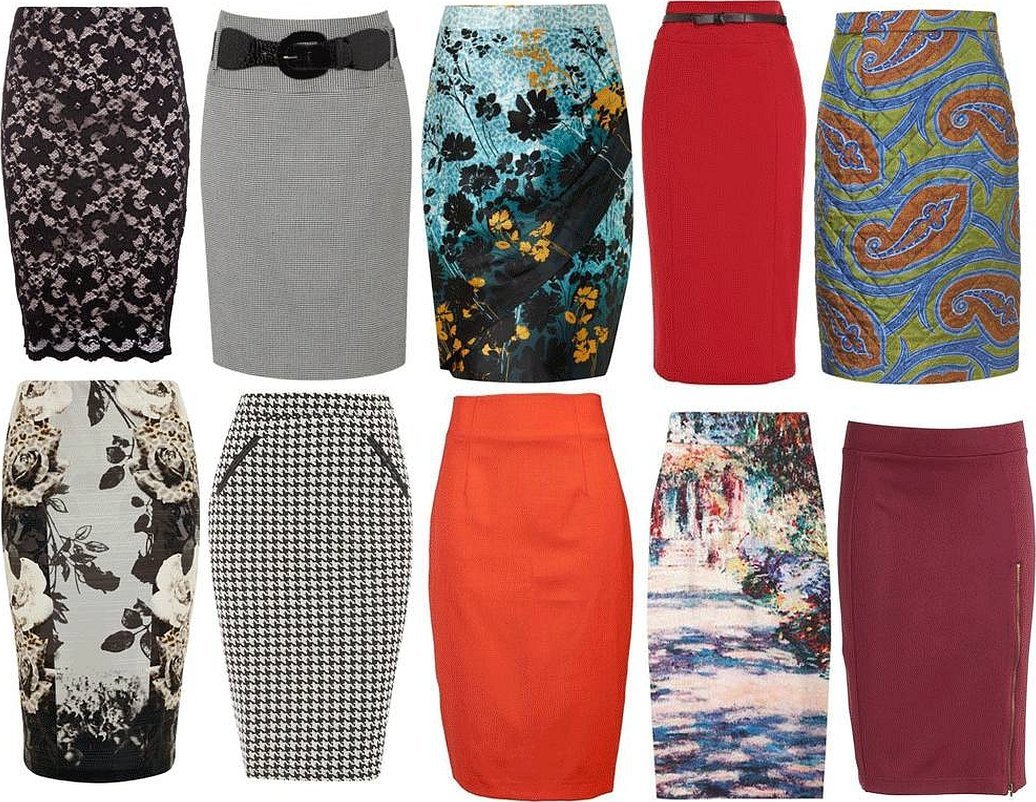
- the tulip is perfect for a figure with a large chest or broad shoulders and a narrow waist, because it visually makes the hips look bigger, but it is not very suitable for short girls because it shortens the legs;
- a wrap skirt, due to its interesting style, helps to hide flaws such as a belly or extra folds, but the skirt should be as simple as possible, because you can get the opposite effect;
- The A-line silhouette is almost universal, it enlarges narrow hips, but at the same time hides wide ones, the only thing to consider is that it visually shortens the legs;
- a sun skirt maximally emphasizes the waist, but makes the hips look massive;
- a godet skirt can make wide hips look lighter, but is contraindicated for women with wide calves;
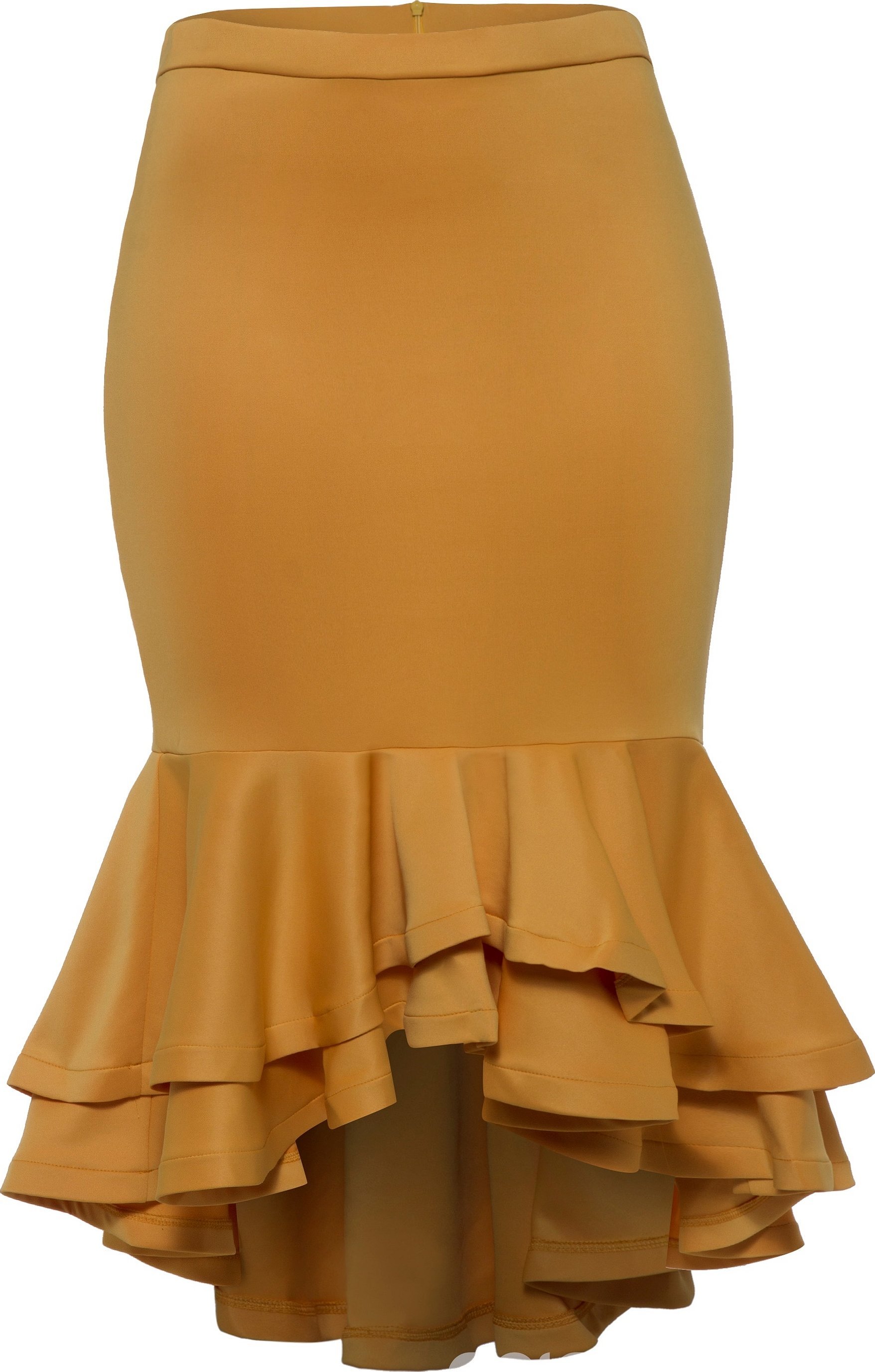
- Pleats lengthen and lighten the silhouette, but at the same time look awkward on larger sizes;
- A mini skirt is perfect for those who want their legs to look longer, but you shouldn’t overdo it if you have a curvy figure;
- with a peplum it will help to hide all the disadvantages of the hips, but when sewing it is important to take into account that on a curvy figure the peplum should be either higher or lower than the widest part of the hip;
- a straight skirt will suit everyone, it elongates the figure well, but it is necessary to take into account that styles up to the knee and below visually reduce height;
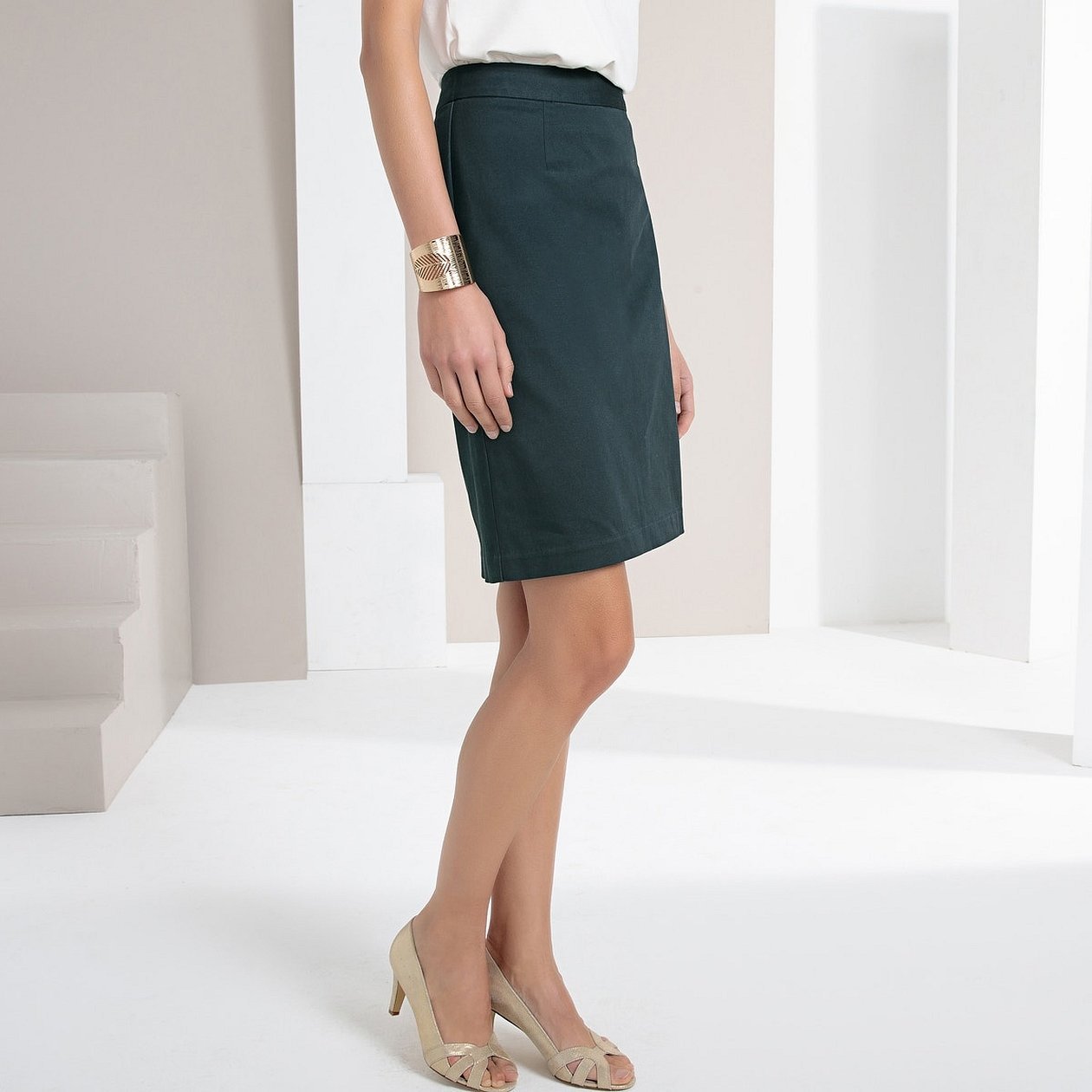
- a multi-layered skirt will only suit small, thin girls; in other cases it looks very unsuccessful;
- A full-length skirt can hide all the flaws of your legs, but at the same time it reduces your height.
At the peak of popularity now are straight skirts, pencil skirts, trapeze skirts, wrap skirts, flared skirts, skirts with a front slit, pleated skirts and asymmetrical skirts.
Important! It is the fabric that can highlight a good cut and a perfect fit. A poorly chosen material can quickly ruin everything.
By the time of year, all the nuances are generally obvious - for summer, light flowing fabrics (ideally chiffon or natural cotton), the body should breathe and feel comfortable. In winter, it is best to choose natural wool, boucle or tweed, firstly, such a skirt will hold its shape well, and secondly, it will keep the heat well.
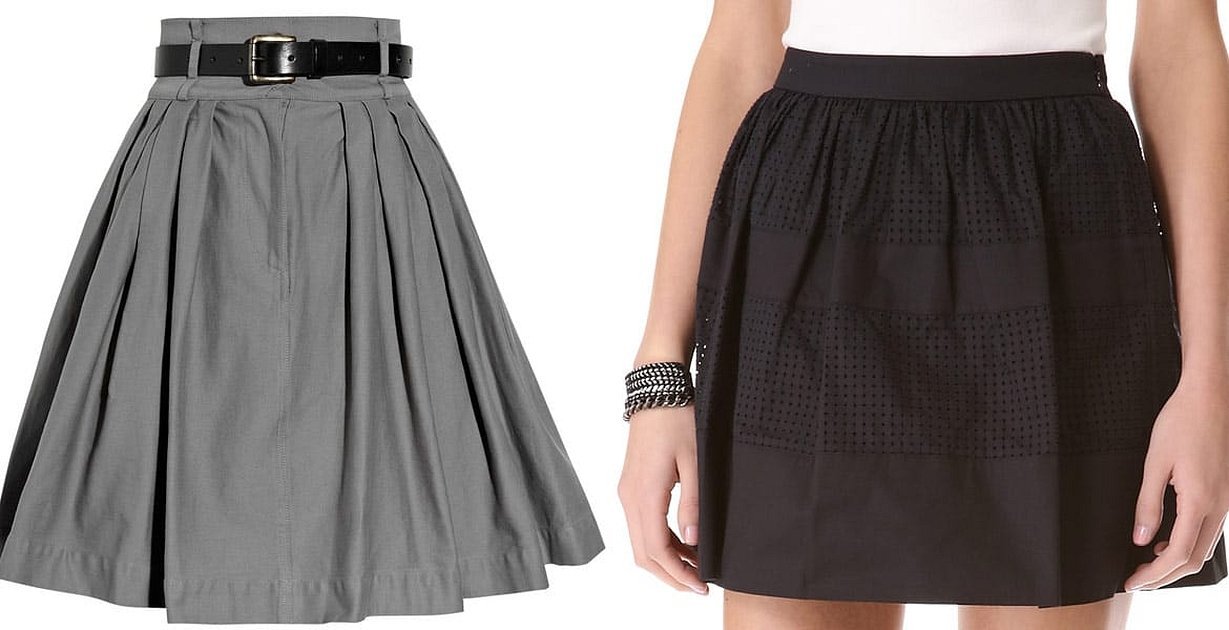
If the skirt is intended to be worn exclusively to the office, it should not wrinkle in order to always look impeccable. Accordingly, this effect can be achieved by adding synthetic fibers.
What fabric are skirts made of?
Absolutely all fabrics are in vogue - both natural and with a mixture of synthetics and completely synthetic. The most popular fabrics from which skirts are sewn:
- Natural cotton. This material is almost universal. Thin fabrics are ideal for summer, and thick ones for the cold season. Cotton products breathe well and do not cause discomfort when worn.
- Linen. A material that has long been considered noble. Its ability to pass air gives the body maximum comfort.
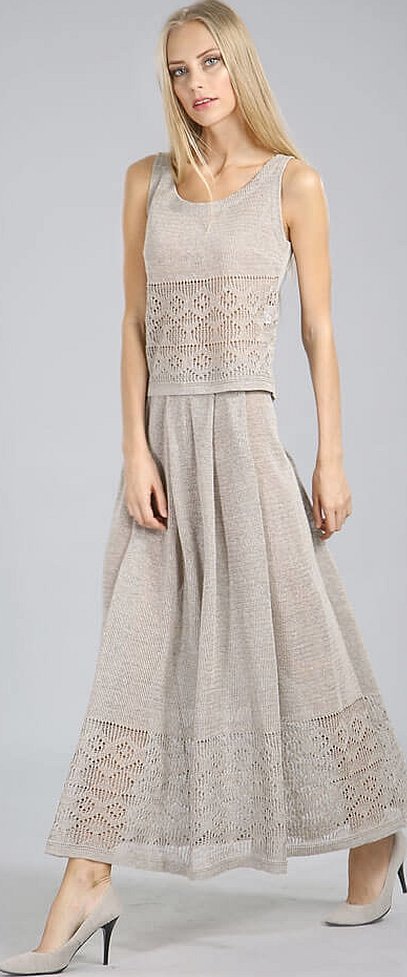
- Velvet. It is most often used to sew festive clothing options due to its specific appearance, but recently stylists have been skillfully incorporating it into everyday looks.
- Jeans. Due to its structure, it successfully emphasizes the figure and hides flaws. This is why girls with curvy figures prefer it. Denim is a universal fabric, both for summer and winter.
- Silk. This material is found equally in natural and artificial forms. Skirts made from it look very festive, and the choice of colors is almost limitless.
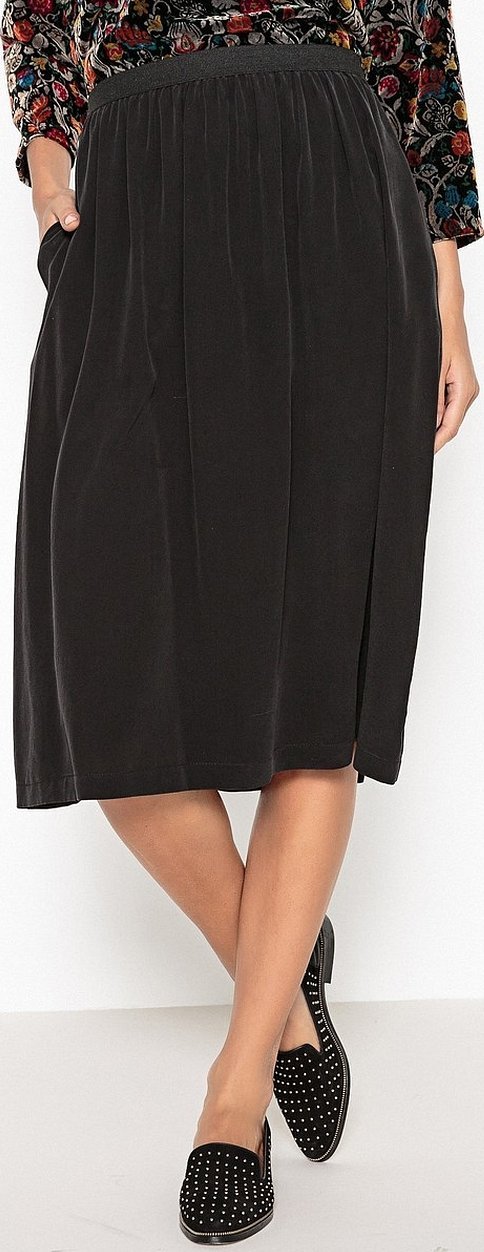
- Wool (cashmere, tweed, boucle, etc.). Material for cold weather, looks very advantageous. Wool fabric can be of different density.
- Velvet. A material that has come into fashion not so long ago, it is more suitable for the cold season. It has a specific structure, due to which it looks interesting on any figure.
- Satin. A smooth fabric that shimmers very effectively. It is very often used on skirts for wedding and evening dresses.

As for the color palette, skirts in indigo, emerald, red, burgundy and, of course, classic black will look great.
Fabrics for pencil skirts
The name for the product "pencil" has always been considered a basic model in the wardrobe. Absolutely any fabrics are perfect for it. Of course, suit fabrics are most often used. Such a skirt must necessarily hold its shape and not wrinkle, so it is better not to take 100% natural fabric.
The following compositions are well suited:
- Wool + elastane.
- Wool + lavsan + elastane.
- Wool + viscose + elastane.
Linen, jersey or denim are good choices for warmer months. Tweed, drape and corduroy with lining are good choices for colder months.
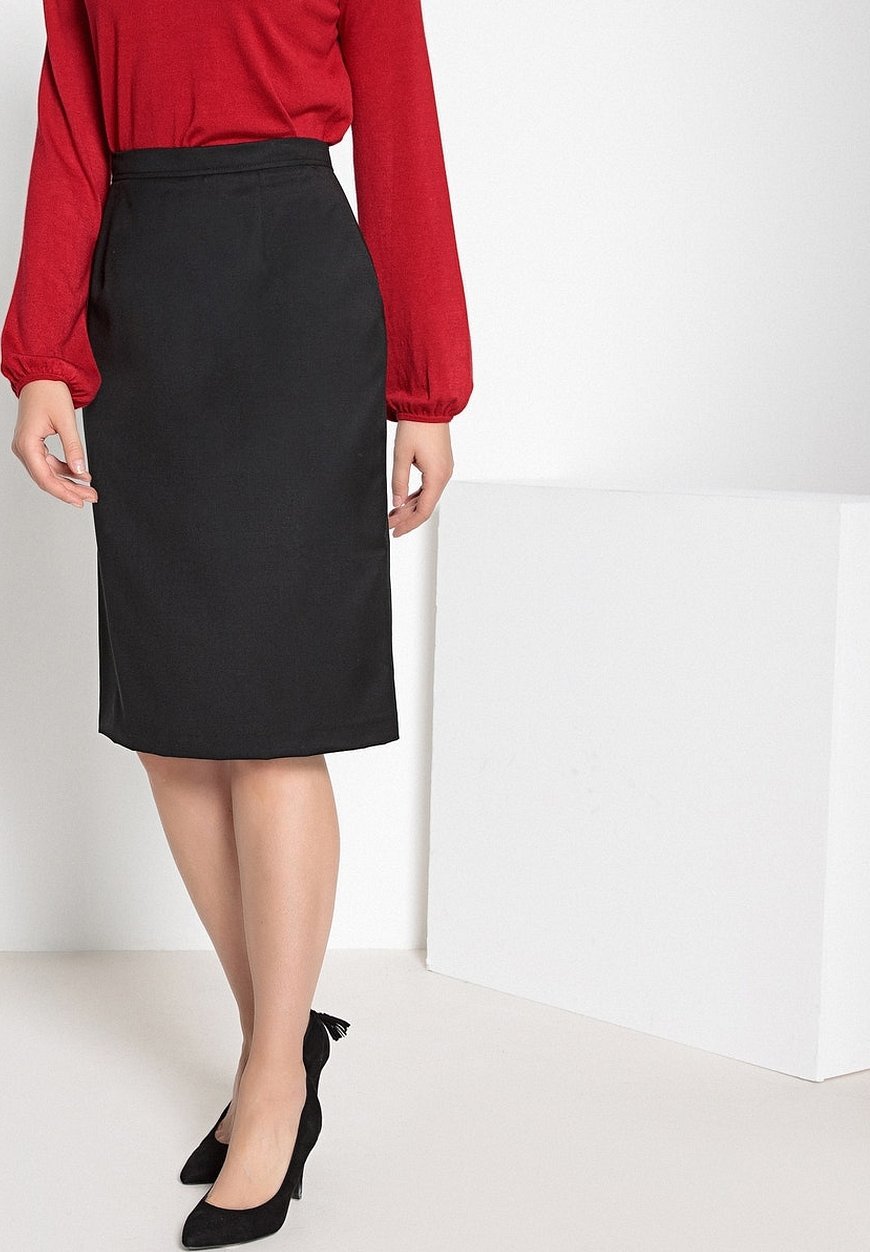
The fabric for a straight skirt is no different from the choice for a pencil skirt. The options can be literally any, the main thing is to choose wisely according to the season. It will be nice if the composition includes stretch.
What fabric to sew a sun skirt from
In fact, a sun skirt is a full-fledged circular style, the pattern is a circle with a hole in the middle. Due to this, it looks lush. It requires a large amount of fabric. If you choose a dense one, the product will seem heavy. Therefore, for this style, it is recommended to take thin, weightless materials. They look beautiful and light. If you still need to sew from dense fabric, then it is better to take a short length of the product itself, so as not to create unnecessary weight.

"The sun" made of thin fabric, for example, chiffon, looks very beautiful due to the effectively falling folds and does not hold volume. But in a strong wind it does not hold and can rise too high. Dense fabric even without movement looks lush, but confidently holds its shape.
For such a product, thin silk or cotton fabric is ideal, which will fall beautifully, or suit fabric, but not too dense, but loose enough to form folds.
What fabric is best for sewing a half-sun skirt?
The half-sun has all the same features as the sun, except that it is designed to form a semicircle, so it is less puffy and requires less fabric to sew. The half-sun allows you to expand your choice and take thick fabrics for autumn, because the product will not be as heavy.
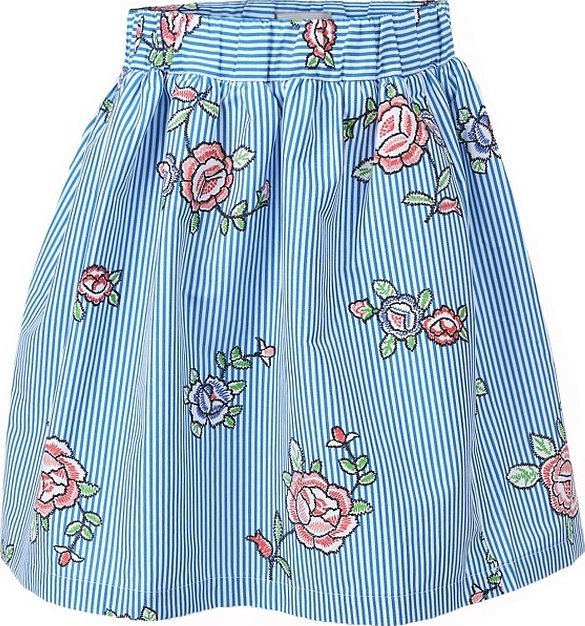
Fabric for summer skirt
Summer skirts have more freedom than all the others. For the summer, you can take both budget polyester and more expensive cotton, linen, etc. Here it is important to decide how important such properties of the fabric as wear resistance, shrinkage, shape are.
Of course, any natural fabrics (cotton, linen, silk) are always better, because the body breathes, does not sweat, allergic reactions do not occur, etc. However, they have one significant drawback - they wrinkle and shrink after washing. For the summer, you can choose cambric or viscose from the successful and more or less universal options. They are not so prone to wrinkling, but are very comfortable. In extreme heat, they can slightly cool the body.
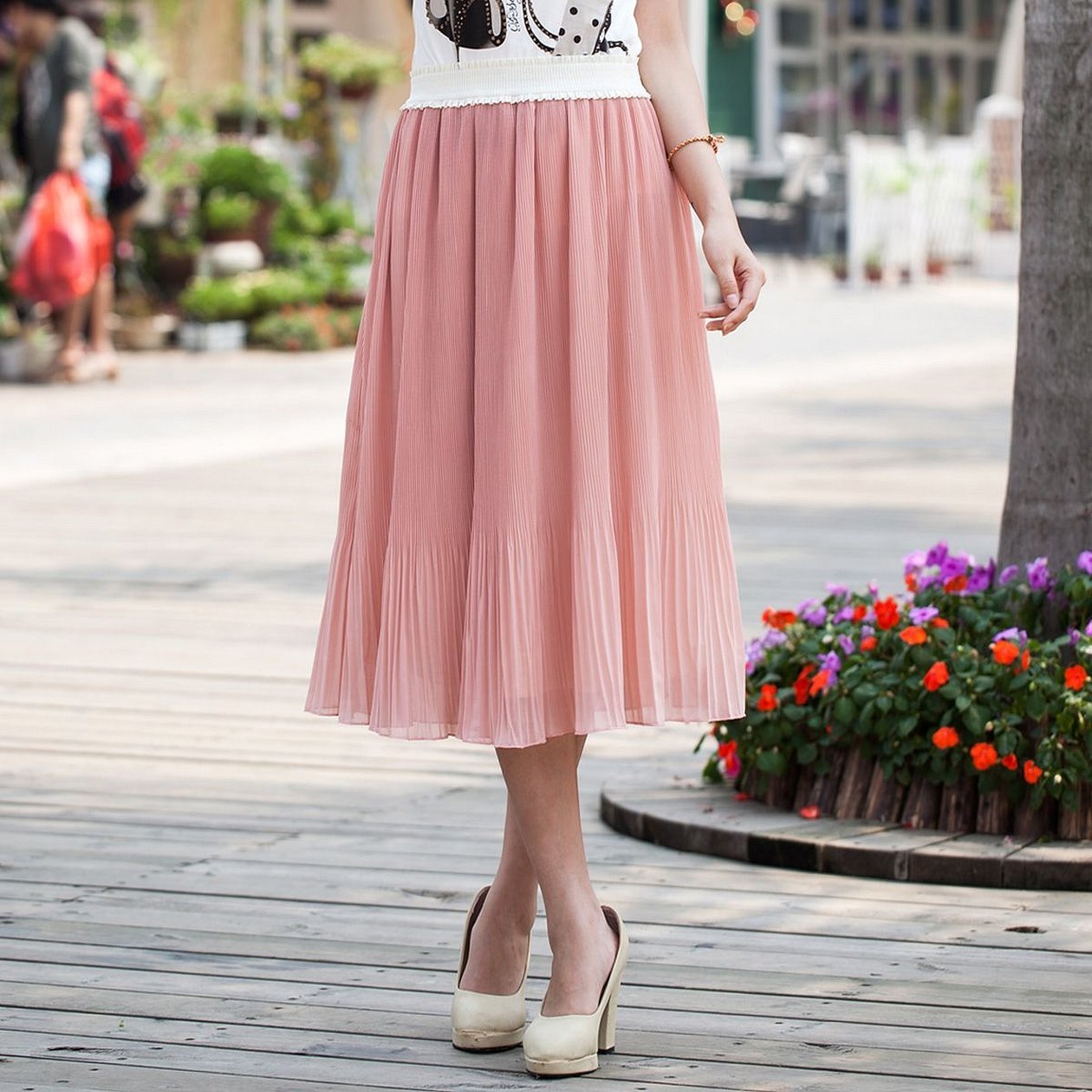
In summer fabrics, as in any other case, it is necessary to take into account the style of the product. Linen, denim, cotton or silk are suitable for straight and pencil skirts. For pleated skirts, which have recently become fashionable, it is better to take flowing fabrics - chiffon or silk. Wet silk, cotton and viscose are suitable for most models.
For summer, light, translucent fabrics are often used, but items made from them are usually multi-layered (for example, this type of skirt can be called a "tutu"). Sometimes they even use lace or knitted fabric, and add a lining underneath.
Almost any skirt fabric is suitable for sewing summer items. The most important thing is to consider how the final result should look.
How to choose fabric
It is clear from the article that the choice of fabrics for sewing skirts is incredibly large. However, for beginners it is better to sew from silk, denim, gabardine - these materials are not picky and fit very well. Velvet, chiffon, satin may seem difficult. In addition, you should not take fabrics with
The types of fabrics for skirts are pleasing in their abundance, they are limitless - they can be absolutely any and with any composition. The main thing to consider when choosing is that the resulting product should effectively emphasize the advantages, hide the disadvantages and correspond to the season of wear. Knowing what fabric you can sew the skirt you need from, you can significantly reduce the time spent searching. Not every sewing school gives such a detailed description.




